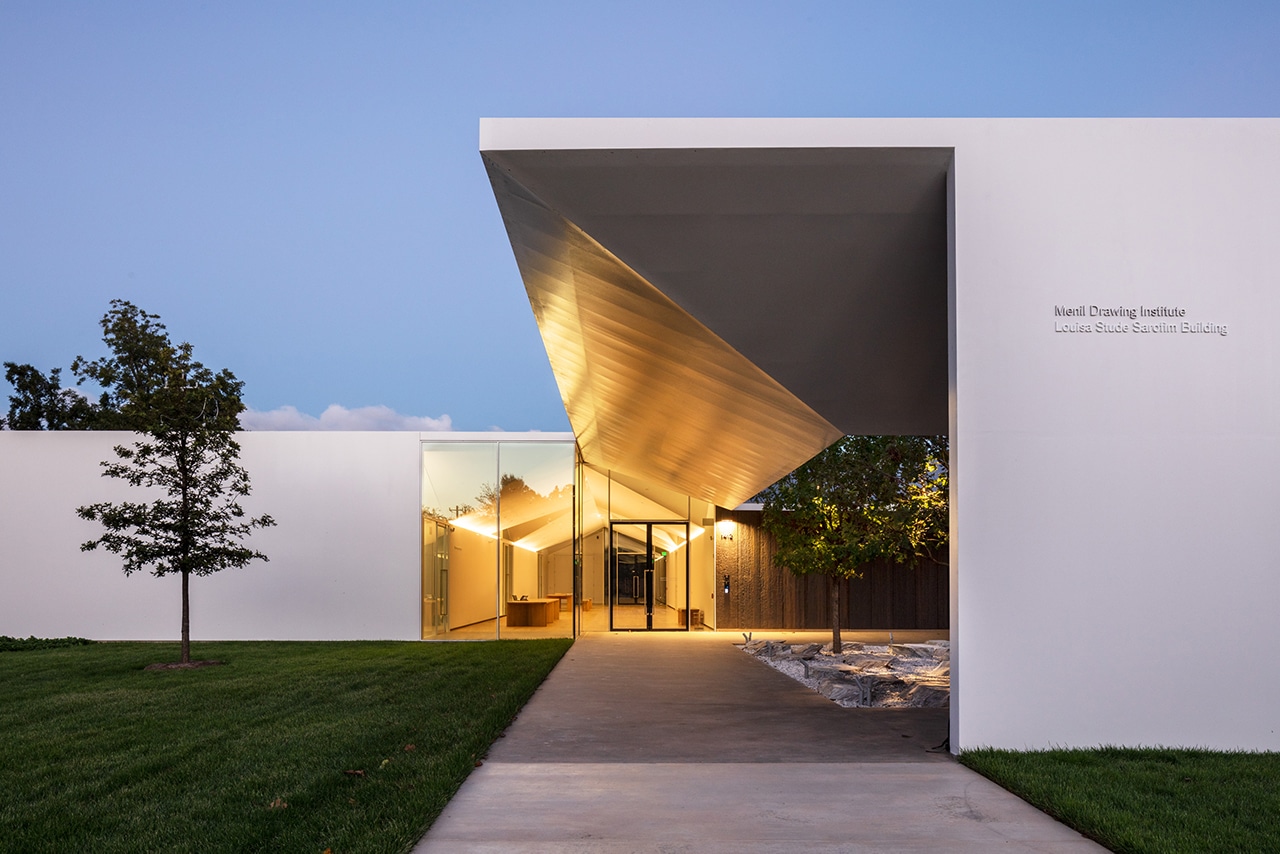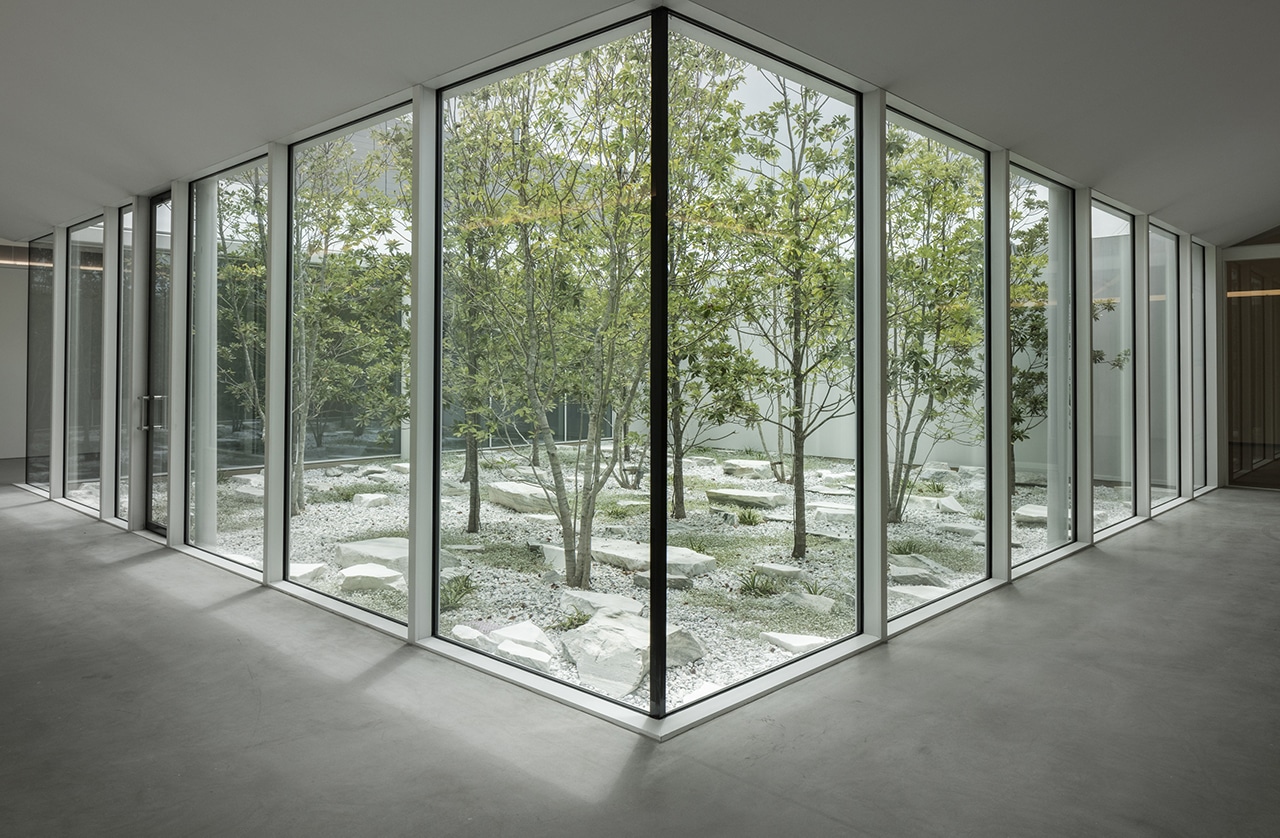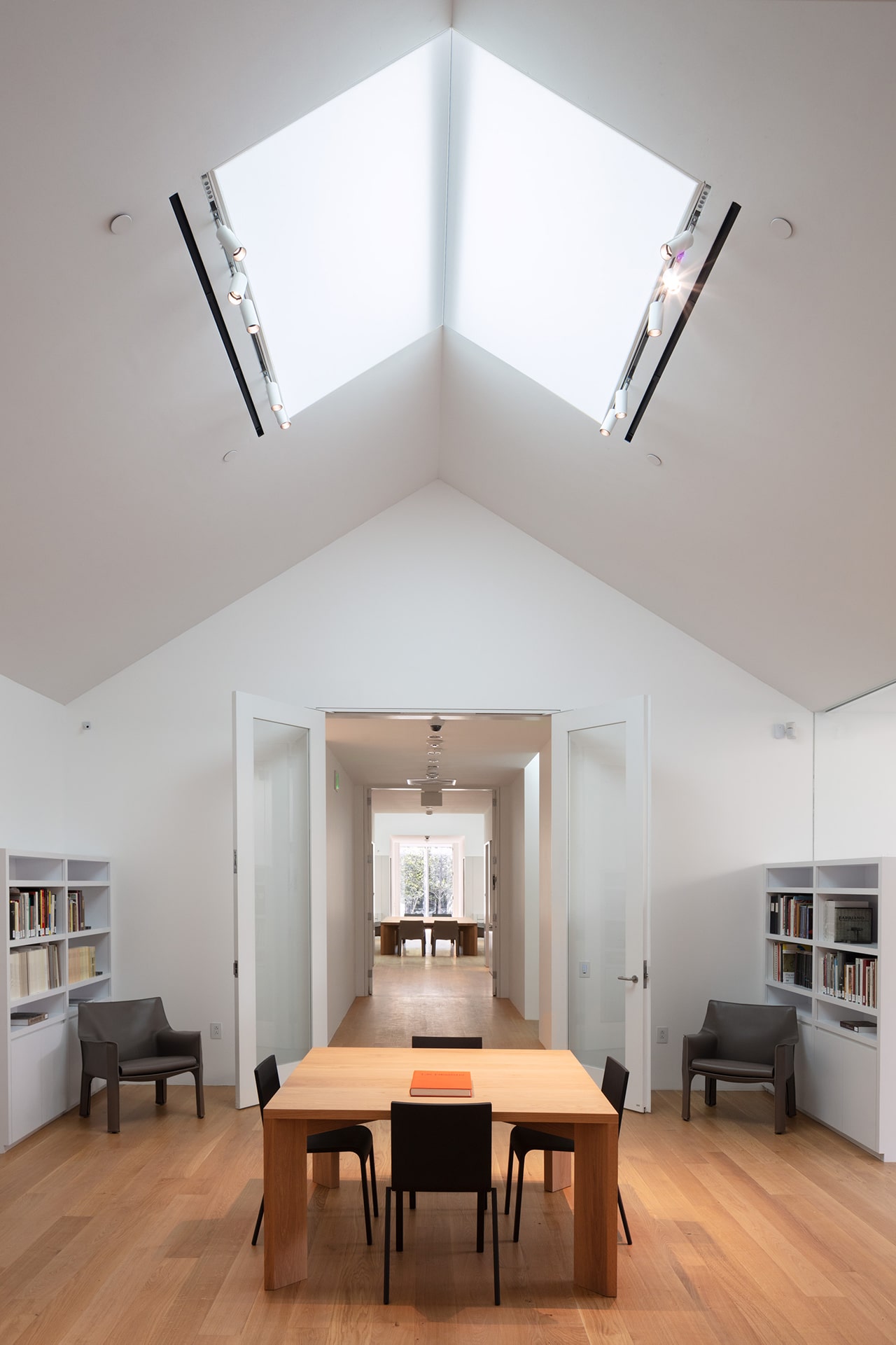
Menil Drawing Institute Louisa Stude Sarofim Building, West Elevation [Photo: Richard Barnes]
In the heart of The Menil Collection, a 30-acre art neighborhood in Houston, the Menil Drawing Institute looks simple from afar. The $40 million project opened to the public in November 2018 as a single-story, 30,000-square-foot building with an all-white exterior and a broad, flat roof. The institute was designed to house the works of an often overlooked art form. It makes a statement by reminding patrons that drawing is not just the means to a great painting or sculpture, it’s a work of art on its own. The building, designed by LA-based architectural team Johnston Marklee, reflects the same sentiment. Though it seems simple, every decision in its design is distinguishing and strategic as it interacts seamlessly with the environment around it.
Perhaps the most impressive accomplishment in the building’s design is the way the indoor and outdoor spaces commingle. The interior courtyards throughout take patrons from white office walls to evergreen forests in a matter of steps while conveniently placed skylights and glass walls flood the building with natural light. At the same time, angular ceilings and expansive canopies keep patrons comfortable and the light-sensitive artwork preserved. Eloquently, and with a lot of consideration, Johnston Marklee has found ways to manage and direct the tenacious Texas sun.

E. Rudge Allen Family Courtyard (Scholar Courtyard) [Photo: Richard Barnes]
Cloister
Cloister is an interior courtyard commonly associated with religious buildings, as they are often found residing at the heart of large monasteries. By allowing contact with nature from the interior of a building, a cloister can provide natural lighting and ventilation while also being refreshing and aesthetically appealing to guests.

Study [Photo: Richard Barnes]
Fritted glass
This glass is created by heating and compressing glass particles into a solid and porous material. Its structure allows designers to utilize natural lighting without solar heat gain. That means reducing the amount of energy used in lighting and cooling the building.
Glare control
Managing glare is important to designers who want to integrate natural light while avoiding direct sunlight on surfaces. Whether done to keep guests comfortable or keep artwork preserved, the strategic placement of apertures and use of shading means not having to compromise on natural internal lighting.
